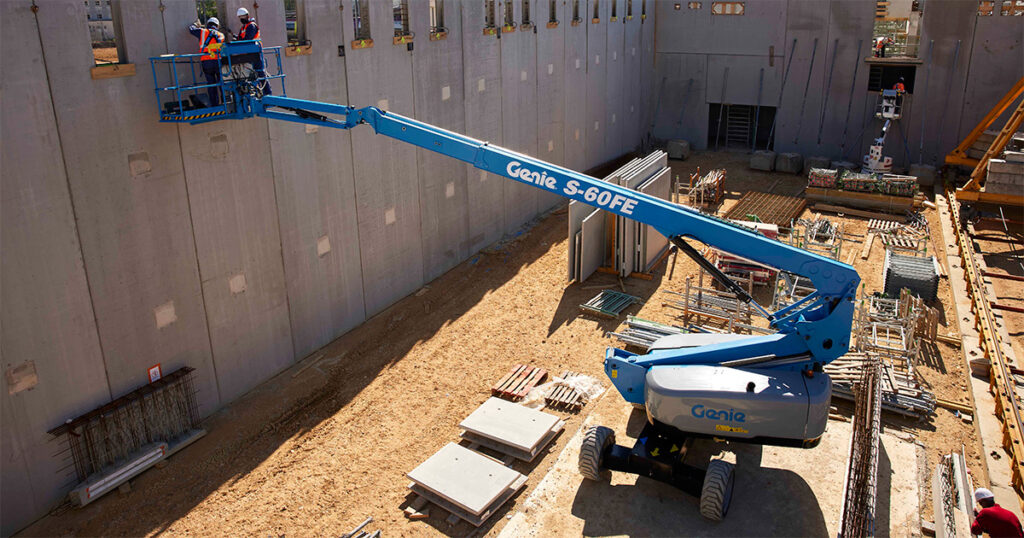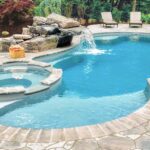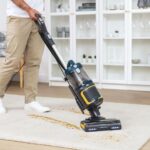Busy buildings never stop. People hurry to classes, rush to appointments, carry boxes, push buggies, and wheel trolleys down the hall. Stairs slow the flow, and full elevators can mean waiting in a long line. Platform lifts step in to keep movement smooth. They are small, quiet, and simple to use. When planned well, they blend into the space and do the job without drawing attention.
What a Platform Lift Actually Does
A platform lift moves people between levels using a steady vertical motion. It can be an open platform with half-height sides, or a cabin with full walls and a door. The goal is straight to the point: make it easy for anyone to go up or down without using stairs. This helps wheelchair users, parents with prams, workers with carts, and anyone who finds steps hard.
Platform lifts are not the same as big passenger elevators. Most models move at a slower speed and cover shorter travel heights. They take less room, need less building work, and often connect two or three key levels. In a small shop, the lift may link the front door and the main floor. In a school, it might connect the lobby to a raised hall. In a clinic, it can bridge a small split level so patients reach treatment rooms without stress.
Why Quiet Matters in Real Life
Noise is not just a small problem. It changes how a place feels. In a library or classroom, loud motors pull attention away from learning. In a clinic or care home, harsh sounds raise anxiety. In an office or shop, constant humming tires staff and makes customers want to leave sooner. A quiet lift supports the mood of the building. Doors close softly. The platform starts and stops without jolts. People around it keep talking at a normal volume because there is nothing to talk over.
When choosing options, it helps to check real examples and compare noise, size, and power needs across models. Looking at reliable platform lifts for homes & businesses can make it easier to see which features keep a lift calm in daily use and which layouts fit tight spaces.
How Lifts Keep Noise Low
Several design choices reduce sound and vibration. Many platform lifts use gearless or high-efficiency motors that do not whine under load. Soft-start and soft-stop controls prevent sudden jolts that shake walls or rattle panels. Rubber mounts and isolation pads sit between the machine and the building, soaking up vibration before it reaches the floor or frame. Good guide rollers help the platform glide in the shaft so it does not scrape or buzz as it moves.
The drive type matters too. Screw-driven units are simple and steady, which helps with control and service. Hydraulic units can be quiet with the right pump and a well-placed cabinet, though older systems were known for drone. Traction units, which use counterweights and ropes, can be very smooth when built for short travel. No one drive fits every site. The best choice is the one that meets the height, duty cycle, and space limits while keeping sound down.
Sound paths need attention as well. A lift installed beside a thin office wall can pass motor hum into the room. A shaft with hard, bare surfaces bounces noise around. Adding acoustic lining inside the machine room or shaft cuts that echo. Careful door seals stop clatter when the car arrives. Even small choices help: felt strips behind panels, snug cable runs, and tidy fasteners that do not rattle when the car moves.
Space, Flow, and Safety
Space planning starts with the obvious: where people enter and exit. Doors should open where traffic already goes, not where people make tight turns or back into others. Clear landings on both levels avoid bunching. Ramps to the platform edge should be shallow and firm. If the lift is enclosed, door width must fit mobility devices and carts with room to spare.
Safety features support quiet use, too. Full-height sensors or light curtains stop the lift when something crosses the doorway. Emergency lowering brings the platform down safely during a power cut. Battery backup keeps controls live so doors can open. Clear buttons with high-contrast labels help all users, including those with low vision. When people trust the lift, they use it calmly. Calm use keeps the area quiet.
Choosing the Right System for a Busy Spot
Every building has its own rhythm. A school has short, heavy bursts at the bell. A clinic has steady flow all day. A shop may have peak hours and quiet mornings. Pick a lift that matches that pattern. The duty rating tells how many trips per hour it can handle without wearing out. The door type matters as well. Automatic doors are faster and safer in busy areas, while manual doors can suit quieter sites with fewer users.
Think about service access before installation. Where will a technician stand to work? Can parts be reached without closing a corridor? Is the main panel easy to see and use? If the answers are clear, service calls stay short and disruptions stay low. A neat service plan does more for peace than any sign asking people to be quiet.
Installation That Respects the Building
The best lifts feel like part of the original design. That starts with structure. The wall that carries the guide rails must be solid. If it is not, reinforcement comes first. A strong base makes the lift feel firm, which cuts shake and noise. Next is routing: cables and conduits should take simple, short paths to avoid whine in the walls. If there is a small machine cabinet, place it away from study rooms or resting areas. A few extra metres can make a big difference to sound.
Fire and access rules still apply. Door sensors, emergency communication, and clear signage are required. Good signs lower chatter because users understand what to do without asking. Lighting helps as well. Bright, even light on landings and inside the car keeps people moving without pause.
Care That Keeps Everything Calm
Even a quiet lift gets louder if parts wear out. A simple check plan keeps the sound level steady. Rollers should roll free. Chains or screws need the right grease at the right time. Door closers should move at a slow, steady rate. Loose panels should be tightened before they start to buzz. Filters in any cooling fans should be cleaned so motors do not strain.
Record every visit in one log. Track small changes in noise, vibration, and door speed. If the motor pitch rises, schedule a check. If a door starts to bounce, adjust it before it slams. Small fixes prevent big problems. This protects the building mood and extends the life of the lift.
Cost and Value Over Time
A platform lift saves space that ramps would take, which is important on tight sites. It can reduce staff time spent helping people on stairs. It can bring in customers who would otherwise avoid a split-level shop. Over time, energy use and service matter more than the sticker price. A well-sized motor, LED lighting, and smart standby modes keep bills fair. Predictable service costs make budgets easier to plan. The right choice is the one that fits the workday of the building while staying kind to the ears and the wallet.
Real Scenes Where Quiet Wins
Picture a small clinic with exam rooms above a half-flight of steps. A quiet platform lift helps patients move without stress, and the waiting area stays calm. In a school, a student using a wheelchair can reach the music room on the mezzanine, and rehearsals continue without a background hum. In a shop, staff wheel stock from storage to the floor during open hours without the thud of a loud machine. In each case, the lift adds movement without adding noise.
Simple Steps Before You Buy
Walk the route users will take. Check door widths, turning space, and landing clearance. Note nearby rooms where sound would be a problem. Ask for noise data, not just speed and size. Look for soft-start control and vibration isolation. Plan where a technician will stand during service, and how to keep the area open when work happens. Set a service schedule and stick to it. These steps are not hard, and they make daily life easier for everyone who uses the building.
Key Takeaways
Quiet lifts support the mood and purpose of busy buildings. The right design, drive system, and sound control keep motion steady and stress low. Smart placement and clear landings guide people without delays. Safety features and simple controls help users move with confidence. Regular care preserves that calm for years. When platform lifts are planned with care, they bring quiet power to the places where it matters most. If a building needs to keep people moving while staying peaceful, this is one upgrade that does the job without stealing the spotlight.



